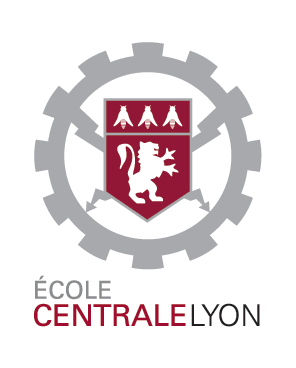ECOLE CENTRALE DE LYON - PhD thesis - Optimization of the performances of a vertical axis wind turbine by a systemic approach involving aerodynamics, electromechanical conversion and power electronics
On-site- Ecully, Auvergne-Rhône-Alpes, France
€26,400 - €26,400 per yearLMFA - Laboratoire de Mécanique des Fluides et d'Acoustique
Job description
ECL and Laboratory presentation
Founded in 1857, École Centrale de Lyon is one of the top 10 engineering schools in France. It trains more than 3,000 students of 50 different nationalities on its campuses in Écully and Saint-Étienne (ENISE, in-house school): general engineers, specialized engineers, masters and doctoral students. With the Groupe des Écoles Centrale, it has three international locations. The training provided benefits from the excellence of the research carried out in the 6 CNRS-accredited laboratories on its campuses, the 2 international laboratories, the 6 international research networks and the 10 joint laboratories with companies. Its excellent research and high-level teaching have enabled it to establish double degree agreements with prestigious universities and advanced partnerships with numerous companies. With its focus on sobriety, energy, the environment and decarbonization, Centrale Lyon intends to respond to the problems faced by socio-economic players in the major transitions.
The great technological challenges against global warming involve the design electricity production and storage solutions that are renewable, safe, efficient and economically viable. In that context, the project EOLOHC, funded by the Carnot Institute Ingénierie@Lyon, brings the expertise of 4 laboratories of the Lyon area together (Ampère, LMFA, CETHIL, LAGEPP). This project aims at associating decentralized power production solutions (here small vertical axis wind turbines) with a production of hydrogen that can be stored over long periods within Liquid Organic Hydrogen Carriers (LOHC), to be used at a later time. Within the EOLOHC project, the Ampère laboratory and the LMFA are working together on the modelling and the global optimization of the wind turbine system, including the aerodynamic performances, the electromechanical conversion and the power electronics, from a yearly wind scenario as an input.
Typical electricity production from wind energy relies on wind farms with large and powerful wind turbines, which can be the cause of reluctance from neighbouring populations. In the context of a more local production with lower power devices, small vertical axis wind turbines (VAWT) can be an interesting alternative to the classical horizontal axis wind turbines (HAWT). Their performances are a priori lower but some of their characteristics are favourable for an integration in an urban environment, for example. Notably, they do not need to be orientated with regards to the wind direction, they are less affected by turbulent flows and can keep producing power at higher wind speeds.
This PhD project is thus dedicated to the modelling and optimization of the electrical production of a small vertical axis wind turbine. As this subject is very multidisciplinary, an important bibliographical work will be realised on several aspects such as: the aerodynamic performances of vertical axis wind turbines, energy conversion and control systems, as well as physics informed machine learning techniques for the optimisation process. A dynamic model of the aerodynamic performances of a small vertical axis wind turbine subject to a wind scenario will be developed. From the bibliographic work, the set of relevant parameters of the wind turbine will be defined. The parameter space will then be studied experimentally by manufacturing a set of wind turbines at a reduced scale and testing them in a wind tunnel on a range of wind velocities allowing for the application of similitude laws to transpose the result to full scale. This experimental database could then be used to feed a machine learning method (to be defined with the bibliographical work) allowing for an optimisation of the wind turbine associated to its power conversion system (see paragraph below) for a chosen wind scenario. In parallel, a dynamic model of the electromechanical conversion will also be developed to optimise the choice (or the design) of the generator, the power electronics and the control from the mechanical power input predicted by the aerodynamic model. This modelling will also rely on the use of machine learning methods, but working on a numerical database. This database can be built using extensive models of electric circuits associated to control algorithms or, depending on the computation times, reduced models can be used to provide enough data for the machine learning method to provide accurate results. Finally, the two models mentioned above will then be associated within a global dynamic model, allowing for a system optimisation of the wind turbine subject to a wind scenario. An objective would be to have an optimisation tool of the system that is versatile enough to be used in more complex scenarios in later work (for example association of multiple wind turbines).
Job requirements
Diplomas : Masters degree or equivalent
Experience : none
Knowledge required: Candidate with a Masters Degree or equivalent with a background in general engineering, or focused on energy production with a multidisciplinary nature including fluid mechanics aspects (aerodynamics) and energy conversion aspects (electromechanical conversion,
power electronics, control and command). The candidate has an interest in modeling, design and experimental work.
Recruitment timetable: applications until 01/10/2024
Job starting date : as early as November 2024
or
All done!
Your application has been successfully submitted!
